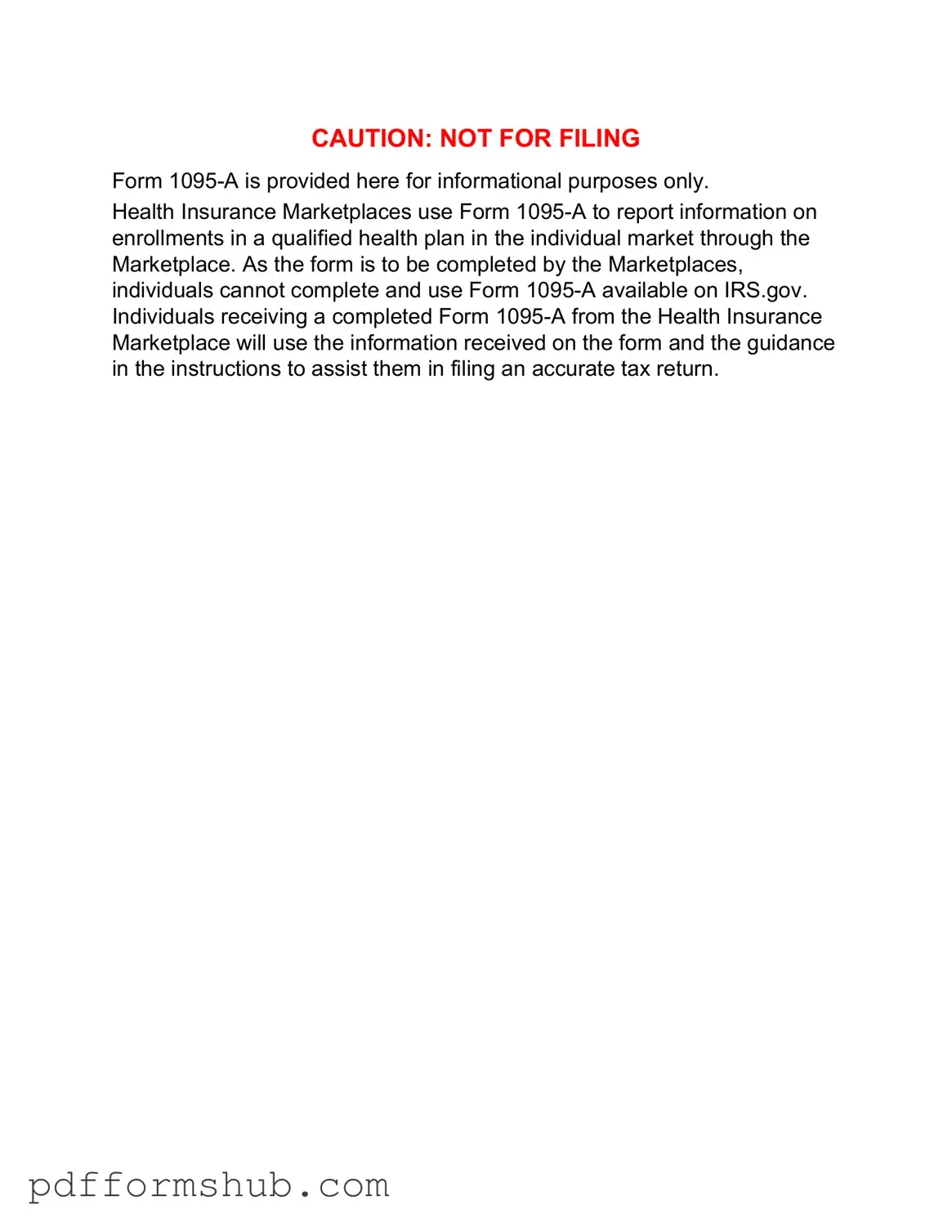The IRS 1095-A form plays a crucial role in the health insurance landscape, particularly for individuals and families who obtained coverage through the Health Insurance Marketplace. This form serves as a record of the health insurance coverage provided during the tax year, detailing essential information such as the months of coverage, the premium amounts, and any premium tax credits received. Taxpayers use the information on the 1095-A to complete their tax returns accurately, especially when determining eligibility for the Premium Tax Credit. Additionally, the form helps individuals reconcile any advance payments of the Premium Tax Credit with the actual amount they qualify for based on their income. Understanding the components of the 1095-A, including the Marketplace identifier and the coverage details, is vital for ensuring compliance with tax obligations and maximizing potential benefits. As tax season approaches, familiarity with this form can ease the process of filing taxes for those who relied on Marketplace insurance throughout the year.
